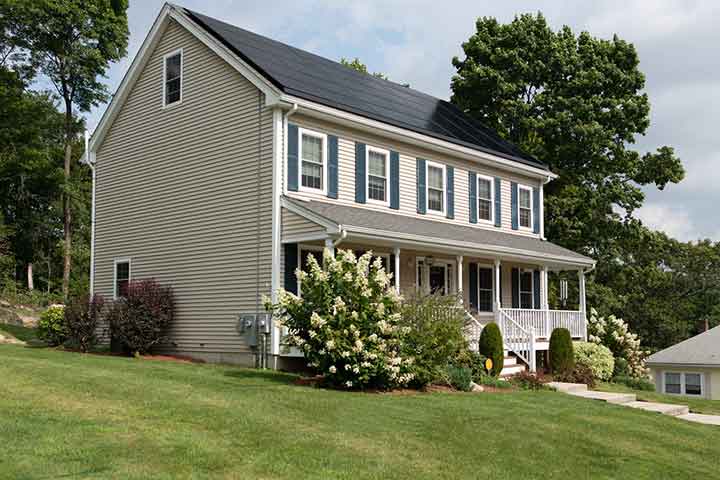
A solar roof is a big investment. You must choose the right type and size of solar roof for your house in Huntsville. Selecting the right solar roof will set your Huntsville roof up for success and help you avoid costly mistakes.
Here are a few tips from our expert Huntsville roofers for buying the right solar roof for your house.
1. Home Power Requirements
Look at the electricity bill to better understand your home power requirements. The bill will show the energy consumed during previous months. Most utility providers also include a graph that depicts the usage of electricity over a particular period of time.
An average American household uses about 11,000 kWh per year. This translates to about 30 kWh per day. If you divide the daily power consumption by 4, you will get 7.5. So, a 7.5kW solar roof system would generate enough power to meet the needs of average American household members.
The power requirements for single individuals or young couples without kids would be even lower. A 3kW solar system would meet the power requirements resulting in electricity savings.
2. Size of the Roof
The roof dimensions will help you find out the number of panels that can be installed on the roof. It will determine how many solar panels will fit on the roof.
But you should remember that the size of the roof should exclude south-facing sections. This is important since the south side of a home does not receive enough sunlight required for solar panels.
3. Types of Solar Roof
Solar roofs are of different types depending on the solar cells used in the construction. The three main types of solar roof include:
- Polycrystalline solar panels
- Monocrystalline solar panels
- Thin-crystal solar panels
Polycrystalline solar roof panels have a dark blue color. They are manufactured with silicon wafers using a Bridgman process that results in low-cost panels. However, the structure of the panels is nonhomogeneous that results in more space requirements to generate power.
Monocrystalline solar roof panels have dark black color. The panels are also manufactured with silicon wafers using a process that results in a homogeneous lattice structure. This allows the panels to generate energy more efficiently as compared to polycrystalline panels.
Thin-Film panels are manufactured of a semiconductor material instead of silicon wafers. The material is deposited on a ceramic substrate. The cost of solar roofs is low but they occupy more space area as compared to other types of solar roofs.
You must select monocrystalline solar roof panels if budget is not an issue. However, if you have a low budget you can go for either polycrystalline panels or thin-film solar panels. It is important to let a professional Huntsville roofer evaluate the roof to determine the right type and number of panels on the roof.
4. Water Drainage
An important consideration when selecting solar roof panels is the drainage of water. There must be no obstructions so that the rainwater flows down into the gutter.
Solar roof panel wires and equipment such as racking can obstruct the proper flow of water. The wires and equipment can result in the accumulation of water on the roof. The accumulated water can result in water leaks and other costly roof problems.
To avoid costly roof repairs, you must let professional Huntsville roofers inspect your home roof after the installation of the solar panels. The professional roofers will make sure that the solar panel wires and equipment will not prevent the proper flow of water on the roof. This will help prevent costly house roof repairs in the long run.

